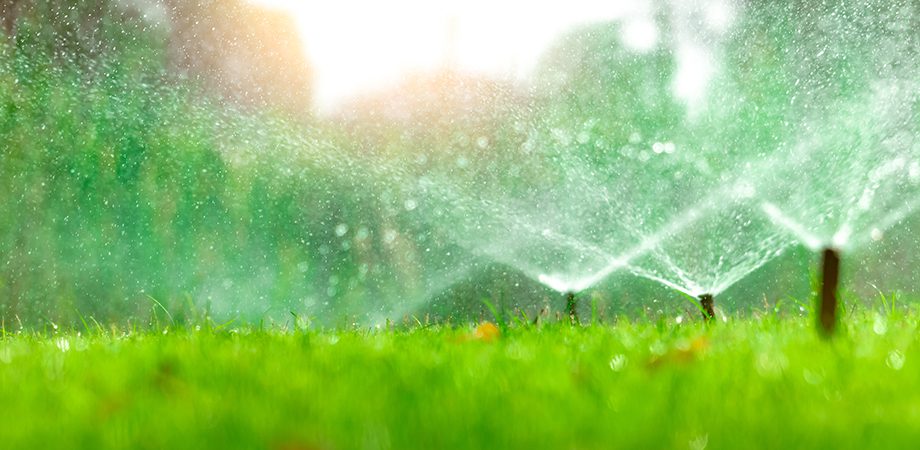Don’t Over Do It: Why Too Much Water is Bad for Turf

It’s no secret that proper irrigation is an essential part of having a lush, green lawn. But what will happen in your quest for the greenest lawn in the neighborhood if you decide to be a little too generous with the water? You will quickly find that your lawn will go from lush to mush.
The best advice for watering your turf is not to overdo it. Too much water will cause a host of problems and recovering the lawn will take time and cost money.
Problems from Overwatering
Drowns the Root System
The soil is made up of sand, silt, clay particles, and porous spaces filled with oxygen, which is essential for plant growth. Constant watering will fill these porous spaces with water instead of oxygen, causing the roots to drown. The lawn will then develop a shallow root system and be more susceptible to turfgrass diseases, insects, and weeds.
Disease and Insect Damage
A stressed lawn with a shallow root system is now open to attacks from diseases and insects. The moisture from the frequent watering will cause fungal growth like mushrooms, rust, anthracnose, as well as the presence of molds and root rot.
Overwatering a lawn will eventually promote the growth of a thick layer of thatch because the natural decomposing bacteria needed to break down the thatch can never develop. Insects will begin to flourish in the thick thatch and start chewing on the roots and leaves and kill the lawn.
The Weed Takeover
A lawn that has been overwatered for a couple of years is hugely susceptible to weeds. Weeds that love water, like nutsedge and crabgrass, will start to take over in the wet and poorly-drained, compacted soil.
Proper Watering Practices
The first rule is to not water the turf every day and try to water in the mornings to prevent fungus. The lawn needs about 1 to 1.5 inches of water per week through irrigation or rainfall. A general rule is to irrigate 2-3 times per week, watering the lawn about 0.5 inches each time. Placing a rain gauge in the yard is a handy way to measure rainfall. If you have a sprinkler system, it’s a good idea to check and adjust the water output as the weather conditions change, especially during times of high heat when water will evaporate. You can check the water output by placing a small container by the sprinklers to see how long it takes to fill up to 0.5 inches of water. Also, make sure the sprinklers are not missing spots in the yard or wasting water by pointing out into the street.
There are also three ways to check to see if your lawn needs water. The first is the screwdriver test. If you can’t push a screwdriver into your lawn, then the soil is dry. Second, if your footprints don’t disappear when you walk across the lawn, then it’s time to irrigate. Lastly, you can tell if your lawn is dehydrated if it is bluish-green in color.
Don’t forget to consult your ATS rep if your lawn is suffering from too much irrigation or rainfall. We have the grass seed, fungicides, insecticides, and most importantly the know-how needed to recover your turf!







